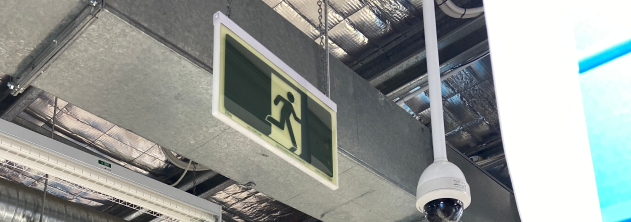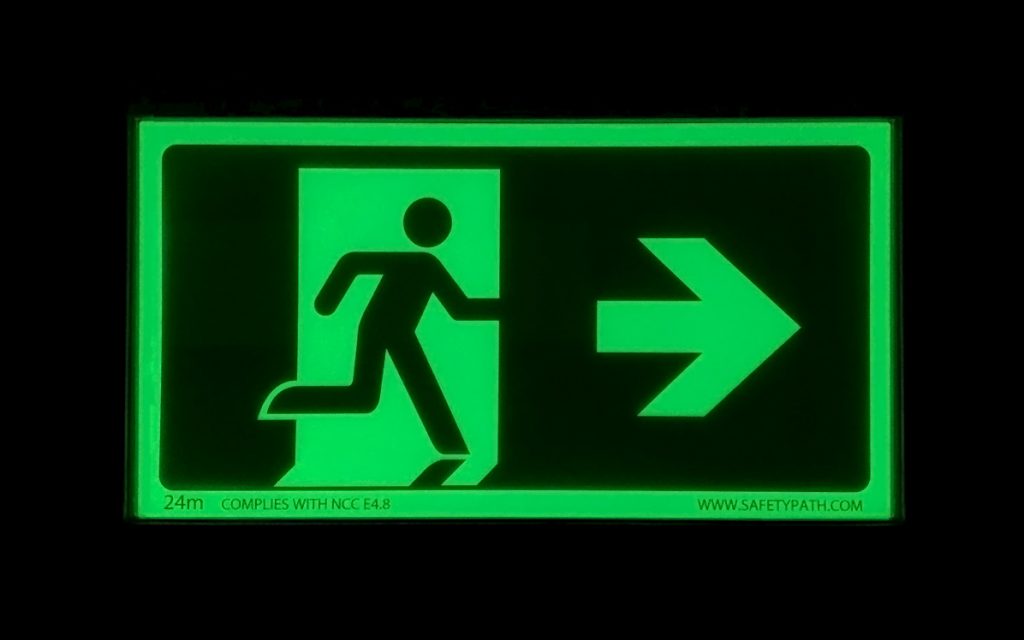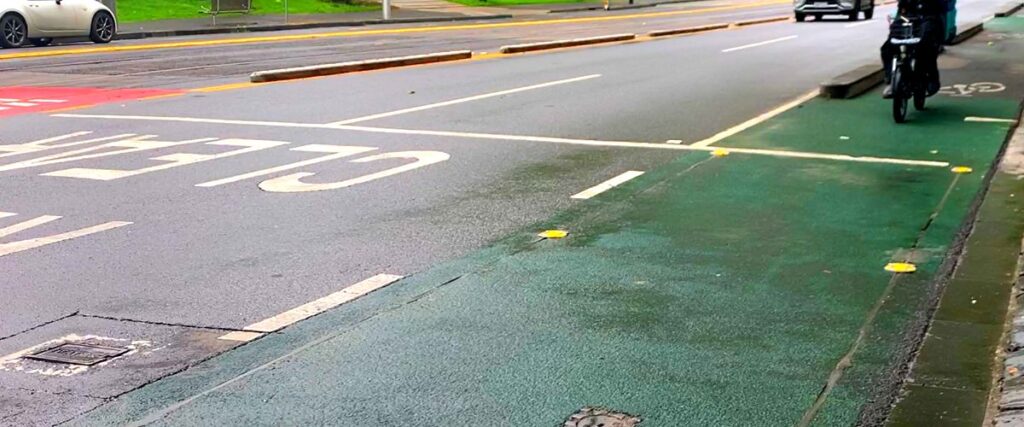
9 reasons to change exit signs
6 minute read
December 3, 2021
Building managers and owners can reduce costs, reduce eWaste and improve safety with a simple decision to change exit signs.
With the Building Code of Australia enabling photoluminescent exit signs, simply replacing failed electric-battery exit signs with Safety Path exit signs will reduce costs and improve safety. Your maintenance budget and the environment will appreciate it, and you’ll sleep better knowing that a commercially viable photoluminescent exit sign won’t fail when the lights go out.
Here’s 9 reasons why you should change exit signs by using Safety Path exit signs instead of legacy electric-battery exit signs.
1. No electricity
There’s an immediate energy saving from photoluminescent exit signs that will keep money in your pocket. Whether designing or renovating a building or replacing existing electric-battery exit signs as they fail, a simple check of lighting levels determines whether photoluminescent exit signs can be used.
If the nominated light source isn’t sufficient, then a hybrid LED exit sign can be used that will still reduce your electricity use and will deliver environmental benefits like reduced emissions and reduced eWaste.
Non-electric photoluminescent exit signs are also ideal for wet environments and chemical and dangerous goods environments, with no electric components or batteries presenting an ignition risk.
The electric components in electric-battery exit signs consume power 24/7 – and every component is a potential source of failure.
Don’t underestimate how many electric-battery exit signs are in your buildings – there may be 10’s, 100’s or 1,000’s silently adding to your bills. Every photoluminescent exit sign that replaces an electric-battery exit sign reduces your electricity bill.
2. No carbon emissions
Not consuming electricity means no carbon emissions from the operation of a photoluminescent exit sign. This is important to combat climate change. For companies with Corporate Sustainability Strategies the reduction in emissions can be reported annually based upon the reduction in the number of electric-battery exit signs. Changing exit sign technology reduces your emissions.
3. No battery
The electric battery is what keeps an electric-battery exit sign lit should the power fail. But batteries are also a major reason why electric exit signs fail. The alternative is an emergency power supply that requires every exit sign to be connected – an expensive proposition to install and maintain.
Photoluminescent exit signs store light in a photoluminescent wafer and do not have any form of electric battery that can fail.
4. No eWaste
When an electric component or battery in an electric-battery exit signs fails the whole exit sign is replaced generating eWaste from the spent battery and electric circuitry, in addition to the plastics. That’s not good for the environment. Even if the electric exit sign is recycled, its actually better for the environment to avoid generating the waste in the first place.
Electric-battery exit signs require circuitry for the LED light, to charge the electric battery, any light-test mechanisms and for network/wifi connectivity if connected to a monitoring system. Every electric component and battery is a potential source of failure. The more prone to failure the technology, the more time and money you will spend identifying and replacing faulty electric exit signs.
In a purely photoluminescent exit sign there’s no battery or electric circuitry. In hybrid LED/photoluminescent exit signs there’s a small amount of circuitry for the LED lighting but they’re significantly less complex than many electric exit signs with their electric-batteries, test mechanisms and/or networking functionality.
5. Long warranty, much longer life
Suppliers of electric exit signs may only provide a 3-5 year warranty. Many of their warranties have clauses that provide reduced cover if the battery fails. In contrast, Safety Path photoluminescent exit signs have a 10+ year warranty. Accelerated age testing suggests Safety Path photoluminescent exit signs will still meet standards at 30 years.
Think how many times an electric-battery exit sign will be replaced within the expected life of one Safety Path photoluminescent exit sign.
6. Less maintenance and inspection costs
Without electric circuitry and batteries that can fail, using Safety Path photoluminescent exit signs lowers your maintenance costs. That means less replacement signs to be purchased and less electrician costs. There’s no need to connect photoluminescent exit signs to a monitoring system – because photoluminescent exit signs don’t have any electrical components that can fail. That will reduce your monitoring costs too.
Regulations require electric-battery exit signs to be inspected every 6 months, with a qualified electrician observing that they remain on for 90 minutes. An expensive test, twice per year.
Failed electric exit signs are often left until the scheduled 6-monthly inspection, leaving building managers exposed to risk if there’s an emergency before the failed exit sign is replaced. Photoluminescent exit signs don’t have batteries to fail.
A photoluminescent exit sign requires a visual inspection every 6 months to ensure it isn’t damaged and isn’t obstructed. With no more than a quick wipe to ensure it is clean, the 6 monthly inspection is fast and doesn’t require an electrician.
7. Less disruption and risk for staff, customers and residents
The regular replacement of failed electric-battery exit signs can disrupt your operations, customer experience or residents if done within work hours, or require more costly after-hours work. Replacement can involve ladders near doorways or scissor lifts on the shop floor. That’s why using more reliable photoluminescent exit signs are less disruptive to your business and reduce risk for your staff, customers and residents. Change exit signs to reduce risk for your employees and visitors.
8. Less OH&S risk working at heights
Related to the risk of disruption is the need for contractors to be working at heights when electric exit signs need replacing. The OH&S risk is electricians working up a ladder or on a scissor lift, and a safety spotter for the electrician and workers or customers in the area.
Once installed, a photoluminescent exit sign with a 12-year warranty may not require anyone to work at height for its life. A 6-monthly wipe with a simple extendable microfibre duster should be sufficient to keep the sign clean. No need to work at heights.
9. Compliance
Photoluminescent exit signs are permitted by the Building Code of Australia (NCC 2019). The photoluminescent materials for Safety Path Photoluminescent Exit Signs are designed and manufactured in Australia to exceed the performance requirement of NCC 2019 Specification E4.8.
Global movement to change exit signs
The transition from legacy electric-battery exit signs to photoluminescent exit signs is a global movement. Photoluminescent exit signs can be found in high-rise buildings, major international airports, large shopping centres, stadiums and warehouses across the world. With Australia’s performance requirements for photoluminescent exit signs being the toughest in the world, by necessity SmarterLite’s Safety Path exit signs are made in Australia from photoluminescent materials that are world-leading in their performance.
Within Australia, Safety Path exit sign technology is in use in facilities managed by Melbourne Business School, Harvey Norman, Bunnings, Officeworks, CBRE, Crema Group, Liuzzi Property Group and Giancorp Property Group.
Find out more about how Safety Path Exit Signs are commercially viable and you and the environment will benefit from changing exit signs.



